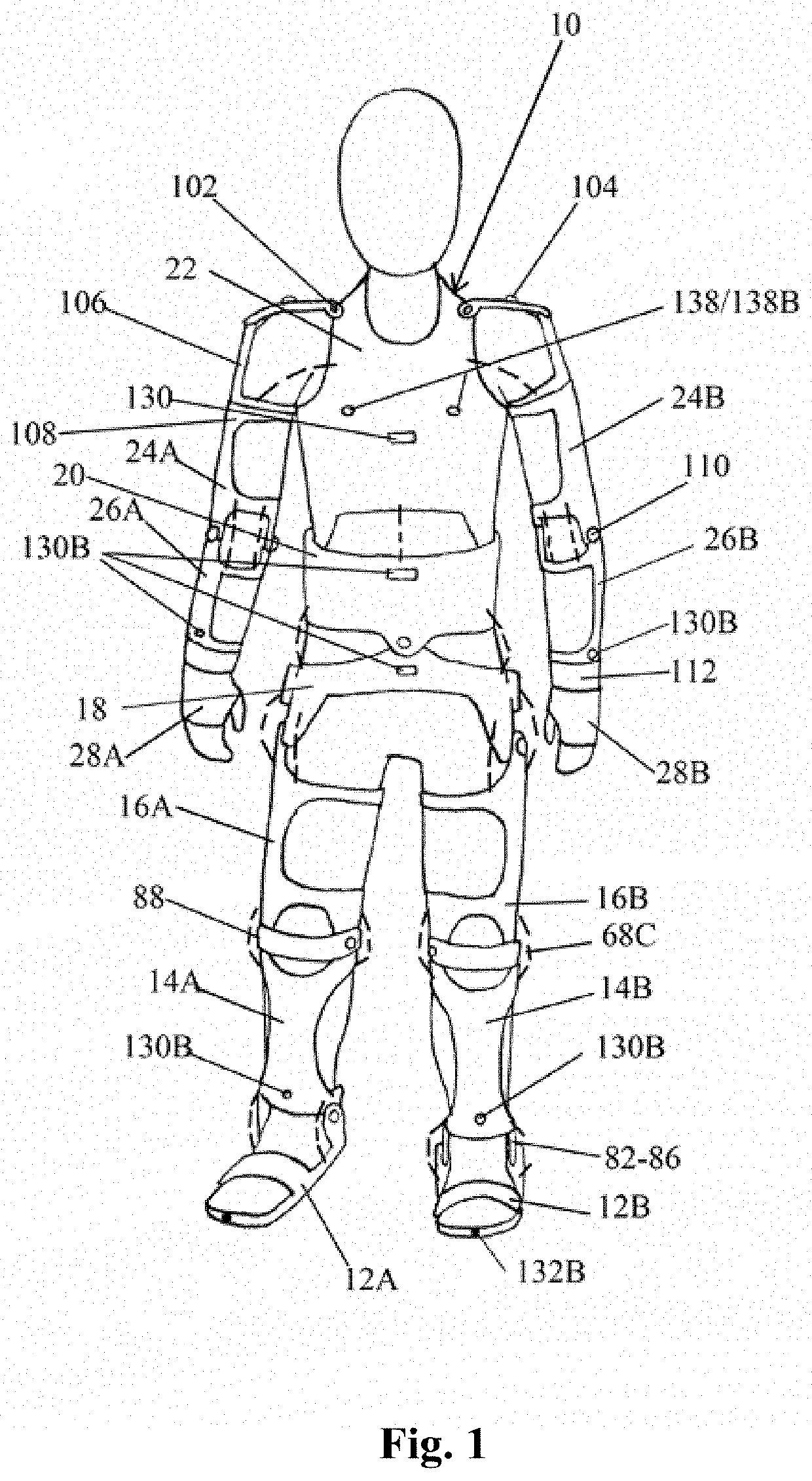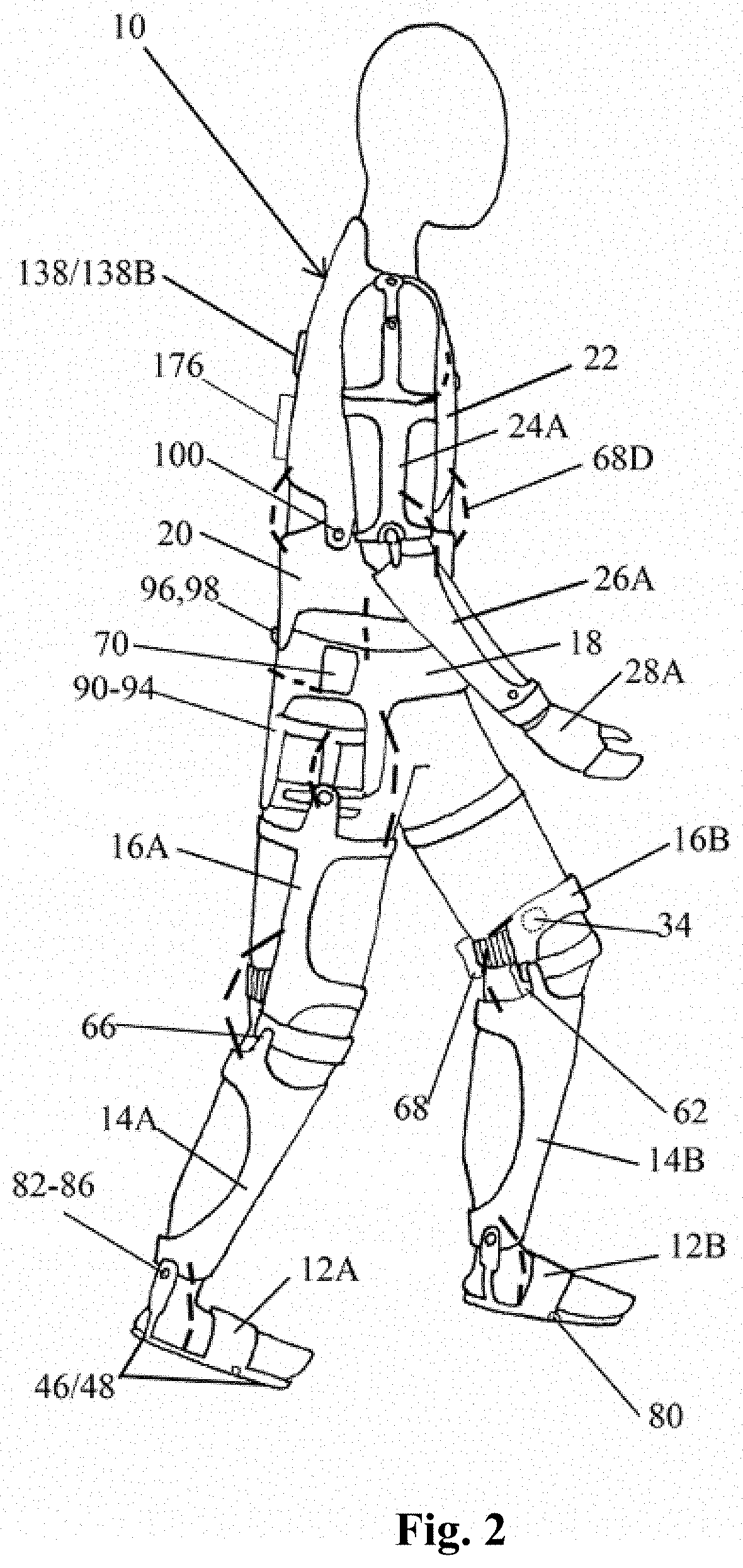Robotic mobility device and control
- Summary
- Abstract
- Description
- Claims
- Application Information
AI Technical Summary
Benefits of technology
Problems solved by technology
Method used
Image
Examples
Embodiment Construction
[0068]FIGS. 1 and 2 depict a robotic mobility assistant device, as worn by a person that includes a plurality of frame elements 10 to 28 that are interconnected by mechanical joints 80 to 112. Each joint device can exhibit different degrees of freedom, as further shown in FIG. 4, that are similar to a person's walking and moving degrees of freedom. The frame components include: foot frames 12A,12B, shin frames 14A,14B, thigh frames 16A,16B, hip base frame 18, abdomen frame 20, chest frame 22, upper arm frames 24A 24B, forearm frames 26A, 26B, and palm frames 28A,28B. The hip, abdomen, and chest frame form the torso or truck frames, the foot, shin, and thigh frames form the lower limb frames, and the upper arm, forearm and palm frames form the upper limb frames.
[0069]The frame elements 12-18 are constructed of materials that are sufficiently rigid to support the individual. Suitable materials include, for example, high strength, carbon fiber, metals such as aluminum alloys, fiberglas...
PUM
 Login to View More
Login to View More Abstract
Description
Claims
Application Information
 Login to View More
Login to View More - R&D
- Intellectual Property
- Life Sciences
- Materials
- Tech Scout
- Unparalleled Data Quality
- Higher Quality Content
- 60% Fewer Hallucinations
Browse by: Latest US Patents, China's latest patents, Technical Efficacy Thesaurus, Application Domain, Technology Topic, Popular Technical Reports.
© 2025 PatSnap. All rights reserved.Legal|Privacy policy|Modern Slavery Act Transparency Statement|Sitemap|About US| Contact US: help@patsnap.com



